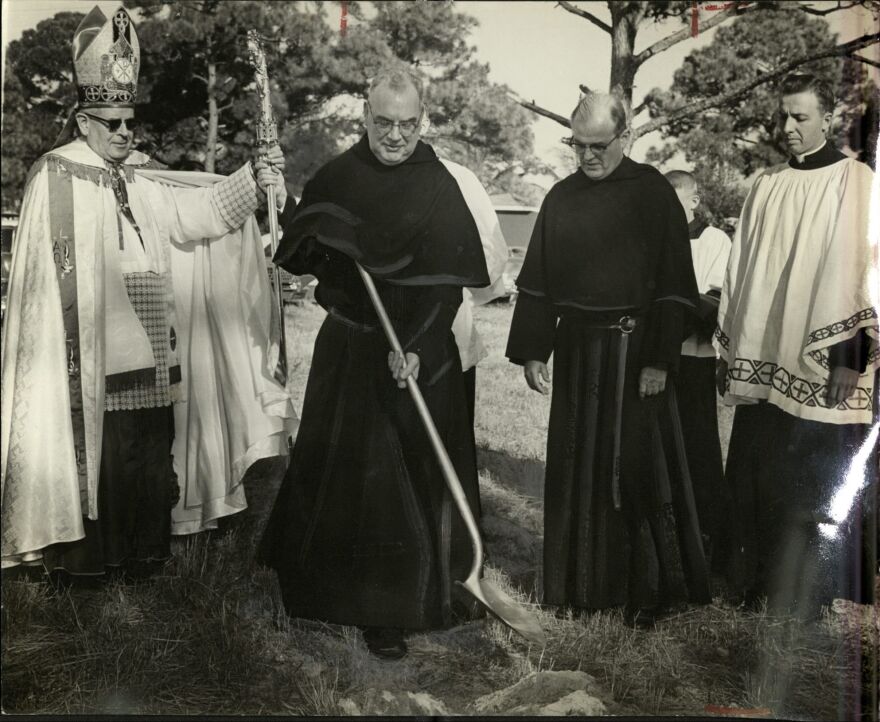In 1961, a year before St. Thomas University in Miami Gardens opened as Biscayne College, the school's founding president, Fr. Edward McCarthy, was in prison.
"With people with machine guns, submachine guns, following our every move," he said in a 1989 interview with St. Thomas University professor Richard Raleigh, of the auditorium-turned-prison in Havana, Cuba where he was being held.
Before incarceration, and before St. Thomas, Fr. McCarthy, an Augustinian friar, was the equivalent of a vice president at the Universidad de Santo Tomas de Villanueva, St. Thomas' spiritual predecessor, founded in 1946.

By 1961, Santo Tomas had a law school, schools of architecture and business and a reputation for working its students pretty hard.
"And I’ve always felt that had we had 10 more years we’d have had a very first-rate university,” McCarthy said.
But as Fidel Castro rose to power, the private, Augustinian school with a number of Americans on the faculty did not fit into the modern Cuba. In April of 1961, when the United States launched its failed Bay of Pigs invasion, things fell apart for the school.
A New York Times obituary for McCarthy, who died in 1996, describes the harrowing days following the Bay of Pigs invasion: "The Cuban Government padlocked Villanueva, and Father McCarthy was taken away at gunpoint. Along with others caught in the middle, he was held for 11 days at a makeshift detention center."
(Below, hear Fr. McCarthy describe the morning of the Bay of Pigs invasion in his interview with Richard Raleigh.)
BISCAYNE COLLEGE

Back in South Florida, unbeknownst to McCarthy, the Archdiocese of Miami had already been trying to start a Catholic men's college in Miami-Dade County. Miami had a women's school, now Barry University. And so with one school falling apart in Havana, with a number of Augustinian faculty members suddenly unemployed and fleeing Cuba, the timing was perfect.
McCarthy was eventually freed from prison, made it to the Swiss embassy and boarded a plane to Miami. He was greeted by his provincial -- his Augustinian higher-up -- when he landed.
In Richard Raleigh's oral history, "Biscayne College, 1962-1966, The Charter Years," McCarthy explains:
"When we came out of Cuba in May 1961 [the school officially closed in May] Fr. Donnellon met us at the Miami airport, and he told me on the way from the airport to the hotel where we were staying that he was negotiating with the Bishop of Miami who wanted us to start a college for men there... and that I would be the first president. So that's how long I was out of a job: from the time I got on the plane in Havana until I got to the hotel in Miami."
Barely a year later, Biscayne College was open. In 1984, when the college became a university, the school changed its name to St. Thomas University.
“It was an homage to our history," says Richard Raleigh, the St. Thomas University English professor who compiled the school's oral history. "And by then there were hundreds of alumni from Santo Tomas living here in Miami. And it was kind of in honor of them as well because they were, I think, very good in supporting the university.”




